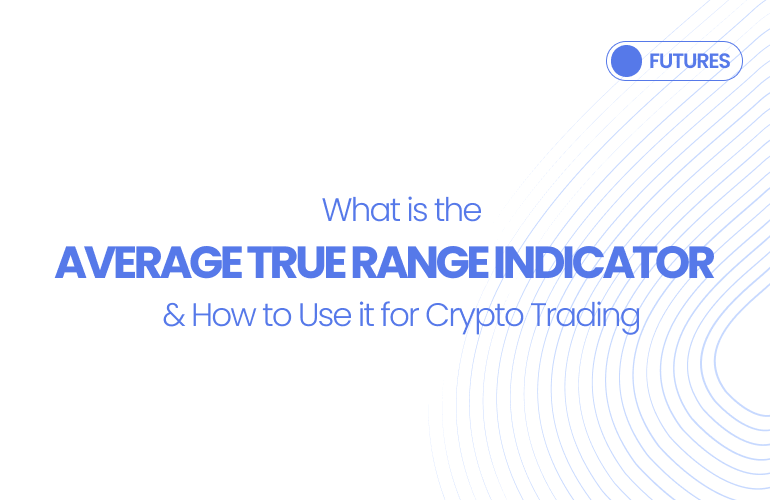Cryptocurrency markets fluctuate constantly in terms of price and volume. For traders in India, this can be both an opportunity and a risk. To make better trading decisions, one of the most useful tools available is the Average True Range (ATR) indicator. This tool helps measure market volatility and offers traders a way to manage risks and refine strategies. On Pi42, India’s first crypto-INR derivatives trading platform, traders can apply the ATR indicator to sharpen their strategies. They also benefit from zero 1% TDS and no 30% VDA taxes.
What is Average True Range Indicator?
Developed by J. Welles Wilder Jr. in 1978, the Average True Range indicator was originally designed for commodities. Over time, the metric has become a standard tool in modern trading across assets, including crypto.
So, what is ATR indicator? Simply put, Average True Range indicator shows you how much the price of an asset typically moves in a certain amount of time. It does not attempt to predict whether prices will rise or fall. Instead, it gives you an indication of how volatile the market is by letting you know how large the price swings typically are on each day.
How is Average True Range (ATR) Calculated?
The ATR formula revolves around the concept of true range. True range tells you how much the price of an asset has moved in a day.
ATR Formula
To calculate the true range, you need to pick the highest of these three numbers:
- The difference between today’s high and low
- The difference between today’s high and yesterday’s close
- The difference between today’s low and yesterday’s close
Once you have the true range for each day, you can calculate the ATR by taking a moving average — usually over 14 days. This gives you a clearer picture of how much the price of an asset typically moves, thus helping you judge how volatile the market really is.
Example of ATR Calculation
Suppose a trader is analysing Bitcoin futures prices on Pi42.
- Day 1: High = ₹3,050,000, Low = ₹2,900,000, Close = ₹3,000,000
- Day 2: High = ₹3,120,000, Low = ₹2,950,000, Close = ₹3,100,000
Step 1: Calculate true ranges:
- For Day 2:
- High – Low = ₹170,000
- |High – Previous Close| = ₹120,000
- |Low – Previous Close| = ₹150,000
- True Range = Maximum = ₹170,000
Step 2: Average across 14 days (for simplicity, we use fewer):
- ATR = Average of all True Range values over 14 days.
This provides traders with a figure indicating how much Bitcoin futures typically fluctuate daily. The gathered data can be vital for setting stop-losses and anticipating price swings.
How to Read the Average True Range (ATR)?
Learning how to read average true range values is crucial to making the most of it.
High ATR values are a sign of volatility. On Pi42, volatility, or large price moves, is often known to happen during major events such as Bitcoin halving or global economic announcements. During these high volatility periods, traders might want to use tighter risk controls to stay protected.
Low ATR values, on the other hand, indicate a calmer market. Prices move in a tighter range with less daily fluctuation.
This kind of low-volatility environment can sometimes be interpreted as the calm before a storm. Traders would do well to plan strategies in case the market suddenly shifts.
Using the Average True Range Indicator in Crypto Trading
When used well, the ATR indicator crypto can be a valuable part of a crypto trading strategy, especially when used on secure, intuitive, and innovative platforms like Pi42.
Using ATR for Entry and Exit Points
ATR helps traders set stop-loss and take-profit levels based on actual market trends, rather than speculation and guesswork.
- A higher ATR indicates a more volatile market. In such a scenario, it might be wiser to set your stop-loss order further away from the entry points so that it is unaffected by normal volatility.
- If ATR is low, it means that the markets are calmer and that tighter stop-losses can help protect against sudden spikes.
Using Average True Range Indicator for Risk Management
Traders can use ATR to manage risk based on market volatility. This is the one area in which ATR is truly remarkable.
- When ATR is high, stay safe by trading with smaller amounts.
- When ATR is low, you can trade with a bit more because price fluctuations are smaller.
- Maintain a consistent and steady risk level.
Using Average True Range Indicator with Other Technical Indicators
ATR works best when used with other types of technical indicators:
- To assess both volatility and trend, pair it with moving averages.
- To understand both momentum and volatility, combine ATR with Relative Strength Index (RSI).
- To pick up possible breakouts early, combine ATR with Bollinger Bands or average true range bands.
Advantages of the Average True Range Indicator
- Simple yet powerful: Easy to understand and use.
- Adaptable across assets: Works well with Bitcoin, Ether, Solana, and more.
- Effective risk management: Helps set realistic stop-losses.
- No directional bias: Focuses only on volatility, not on rising or falling prices..
- Customisable periods: Can be adjusted for short or long-term trades
Limitations of the Average True Range Indicator
ATR has several advantages, but there are a few things which even the most sophisticated systems cannot do.
- No directional insight: ATR cannot predict whether prices will rise or fall.
- Lagging nature: Since ATR is an average, it may not capture sudden market shocks instantly.
- Context-dependent: ATR values differ across assets, making comparisons tricky and difficult.
The Need for Average True Range Indicator
Average True Range Indicator can help understand crypto volatility. By measuring the typical range of price movement, traders can refine entries, exits, and risk management.
On Pi42, traders can use ATR to sharpen strategies. They also benefit from the platform’s unique advantages: no 1% TDS, no 30% VDA taxes, and the ability to set off losses. That means more control over your trades and your taxes!
Your Crypto Learning Continues
What is Ichimoku Cloud? How to use it to trade cryptocurrencies
What is MACD Indicator & How to Use It in Crypto Trading
What is the Stochastic Indicator and How to Use It in Crypto Trading

